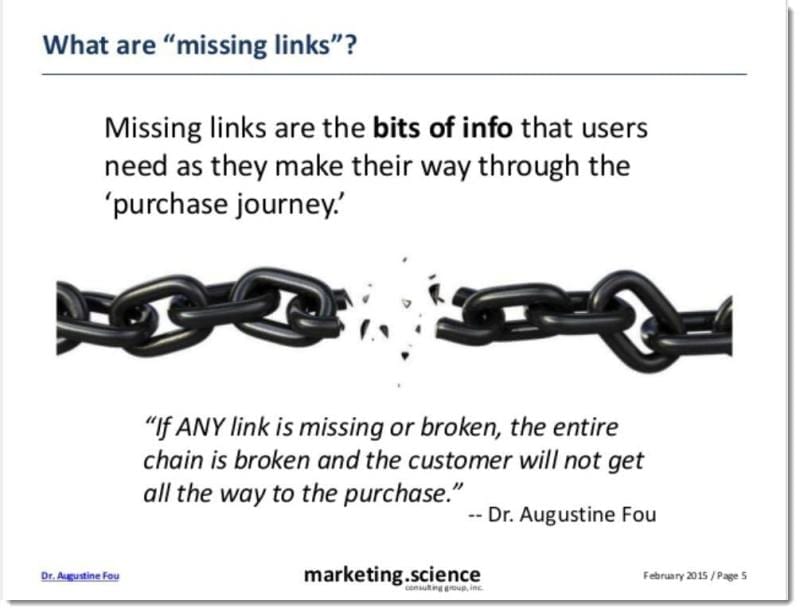I’ve said repeatedly, over the last 15 years, that marketers are using digital all wrong when they approach it with a “reach and frequency” mentality. They think that showing more ads to more people more often will increase sales. This worked well in the early days of TV advertising. But it doesn’t even work that well any more for TV ads because the market has changed and consumers have changed, due to the Internet. When consumers get ideas from seeing an ad, they tend to do more research online before they buy something. This is particularly true of bigger ticket items or more complex items. They research online to inform their own purchase decisions.
Digital is no different. If a prospective consumer gets inspired by seeing a banner ad or video ad, they don’t just go out and buy the product right away. (I realize that there are some impulse purchases). Consumers may not click the ad, but they tend to do a bit more research before actually buying — e.g. look up reviews, check for better prices, etc. Make a mental note of this — they see an ad, and they go online to do a bit more research before buying. Consumers are thus empowered. They don’t just take the advertisers’ word for it; they can actually do their own research. When they are able to find information that answers their own questions, they move closer to the purchase.
Marketers Are Doing Digital Wrong and Wasting 94% of Their Budgets
In recent articles, like The Cost-Performance Paradox Of Modern Digital Marketing and Behavioral Targeting is Not Worth the Premium, I’ve noted that advertisers are wasting up to 94% of every dollar pursuing large quantities of ad impressions, low prices, and behavioral targeting through programmatic digital advertising. Behavioral targeting is not nearly as effective as they think it is, because the data used for targeting is not accurate. For example, data accuracy for a single targeting parameter — gender — is 42%; and data accuracy for two parameters — age + gender — drops down to 24%. Marketers are paying more for ad targeting, but are getting worse outcomes.
So what’s a marketer to do if all this targeting in digital does not work? Indeed, marketers are trying hard to get the right ad to the right person at the right time. Before we can answer this, we have to take a step back and see how consumers have changed, and therefore how advertising needs to change. CFOs should
From Push to Pull
The concept of “targeting” ads to consumers is rooted in decades of “push” advertising in one-way channels like TV, print, and radio. These ads were broadcast outward (pushed) to consumers in hopes that they would see the ad and be inspired to purchase whatever was being advertised. “Targeting” ads to certain groups of people by selecting which TV shows or magazines to place the ads in, resulted in better business outcomes compared to no targeting at all. Targeting in these channels relied on basic demographics and interests (a handful of parameters).
In digital, however, targeting has come to mean microtargeting, hypertargeting or behavioral targeting which rely on hundreds if not thousands of parameters. The effectiveness of this kind of crazy targeting in digital is suspect because the quality of the data is suspect. We’ve all experienced this as creepy, crappy ads following us around the Internet even though we’ve already purchased the item or have no intention of ever buying it after researching it.
So the concepts of hypertargeting and push advertising in digital are sub-optimal or not applicable at all. This is because consumers are wary of ads. They also hate the overwhelming quantity of ads. And they are empowered by the “always-availableness” of information on the Internet, so they can do their own research, instead of just trusting what advertisers told them in ads. They pull the information they need, when they need it. In this new world, the marketers’ job is less about figuring out how to convince or trick the customer into buying their product (through ads), and more about figuring out what customers need in order to get to the purchase efficiently. In other words, the mentality should change from “push” advertising, to “pull,” where the customer is in charge.
Editor’s Note: Academic textbooks use “push” and “pull” differently — “Push is usually defined as pushing intermediaries such as retailers to carry your product, often through a sales force. Pull is about getting consumers excited, regardless of whether that is through one-way or two-way communication.”


